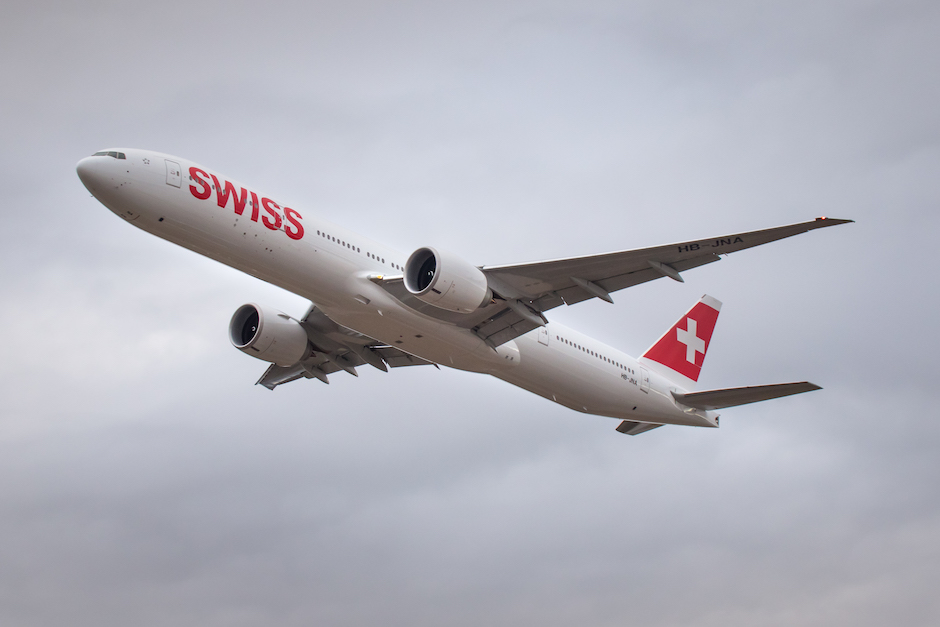SWISS equips Boeing 777-300ER fleet with AeroSHARK
SWISS International Air Lines is set to equip its entire Boeing long-haul fleet with the fuel-saving AeroSHARK surface technology.

AeroSHARK has been developed jointly by Lufthansa Technik and BASF. It consists of ribs around 50 micrometers in size — known as riblets. The surface technology imitates the properties of sharkskin, which has favourable flow characteristics and optimises aerodynamics at relevant points on the aircraft. As a result, less fuel is needed overall.
Starting in mid-2022, a total of twelve Boeing 777-300ERs will gradually be fitted with the riblet films. According to SWISS, the significantly reduced frictional resistance resulting from the modification will make the sub-fleet more than one per cent more fuel-efficient and lower in emissions.
SWISS is the first passenger airline worldwide to use the AeroSHARK technology to reduce the fuel consumption and emissions of one of its existing fleets. With approximately 950m² of riblet film, the modification of the ‘long’ Boeing 777-300ER will be larger than 800m² on the Boeing 777F of AeroSHARK’s launch customer, Lufthansa Cargo.
Register now to continue reading
Thanks for visiting The Engineer. You’ve now reached your monthly limit of news stories. Register for free to unlock unlimited access to all of our news coverage, as well as premium content including opinion, in-depth features and special reports.
Benefits of registering
-
In-depth insights and coverage of key emerging trends
-
Unrestricted access to special reports throughout the year
-
Daily technology news delivered straight to your inbox










BEAS funding available to help businesses cut energy costs
And not a moment too soon, if the following exchange broadcast last Friday 13th June, on the Radio 4 ´Rare Earth´ program (link below, ~ 17 minutes...